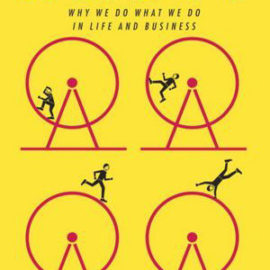Want to learn the ideas in Tao Te Ching better than ever? Read the world’s #1 book summary of Tao Te Ching by Lao Tse here.
Read a brief 1-Page Summary or watch video summaries curated by our expert team. Note: this book guide is not affiliated with or endorsed by the publisher or author, and we always encourage you to purchase and read the full book.
Video Summaries of Tao Te Ching
We’ve scoured the Internet for the very best videos on Tao Te Ching, from high-quality videos summaries to interviews or commentary by Lao Tse.
1-Page Summary of Tao Te Ching
Overview
Lao-tzu’s TAO TE CHING is a classic work of Chinese philosophy that talks about the art of living. It was written during the time of Confucius (551-479 BCE) and authored by Lao-tzu, whose name means “The Old Master” or “The Old Boy.” The book offers advice on how to live with grace, humor, largeheartedness, and deep wisdom. Stephen Mitchell presents it in a free translation with endnotes that offer literal translations in some cases, short commentaries, and examples.
The Tao is the source of all things. It can’t be perceived by humans or understood fully, but it’s the source of everything. The Tao flows everywhere and in all things, creating balance and harmony with its flow. All beings are born from the Tao, but it creates nothing itself; instead, it gives birth to everything else that exists on Earth. Everything returns to the source when they die because they’re a part of the whole cycle of life and death that comes from nature (the tao).
People who hear about the Tao (the Way) embody it instantly. People who understand the Tao half-believe and half-doubt. The fools laugh at it because they don’t understand anything about it. Everyone is constantly learning new things every day, but they are forgetting more than what they’re gaining in knowledge. If one doesn’t do anything, then that person will be able to experience nonaction and allow the Tao to act for him/herself. Those people planted in and embracing the Tao cannot be moved; they are genuine; their families flourish; their country becomes an example for others, and even nature sings along with them! One can only be oneself by living according to the ways of the Tao (the Way). When one opens herself up to these ways completely, everything falls into place around her/him. The way works without claiming credit or receiving thanks from anyone else—it nourishes everyone while remaining humble itself—and yet its greatness endures forever because all other great things vanish into this way as well as themselves become part of it too! This makes this way truly great because there’s nothing greater than being selfless like this!
The Master embodies the Tao and his/her actions are a great example of living in the Tao. S/he does not teach but rather demonstrates and by example helps others embrace the Tao.
Section 0 Summary (Text)
The Tao Te Ching is a book of 81 chapters. The text has been translated into free verse, and it’s broken down into stanzas. It’s followed by Stephen Mitchell’s notes and commentary on each chapter. There doesn’t seem to be any larger structure to the book; however, I’ve divided the text and notes as they are in the original so that there isn’t confusion when you’re trying to compare them side-by-side with each other.
- The Tao is a concept that cannot be defined. It’s eternal and unchanging, but it also has aspects of darkness to it. Those who understand the Tao can see manifestations of the Tao in everything around them. The more you attempt to define or control something, the less effective your actions will be; this is because there are no absolutes in nature. Beauty and goodness lead us to ugliness and badness, while being/non-being, difficult/easy, long/short, high/low are each connected (in terms of relativity). This means that nothing exists in isolation from anything else; we’re all part of one whole thing. Therefore we must act without doing or saying anything at all if we want our actions to have any lasting effect on society as a whole (and not just on ourselves), rather than trying to force things into what they aren’t meant to be by forcing them through our own preconceived notions about how things should work out for us personally. We must learn when enough is enough so that we don’t overdo things and cause even more problems than before, which leads only to confusion among those who think they know exactly how things should go. By letting go, both literally and figuratively, you’ll discover new solutions that weren’t available before ; when you hold too tightly onto something, however, you can lose sight of its true value.





